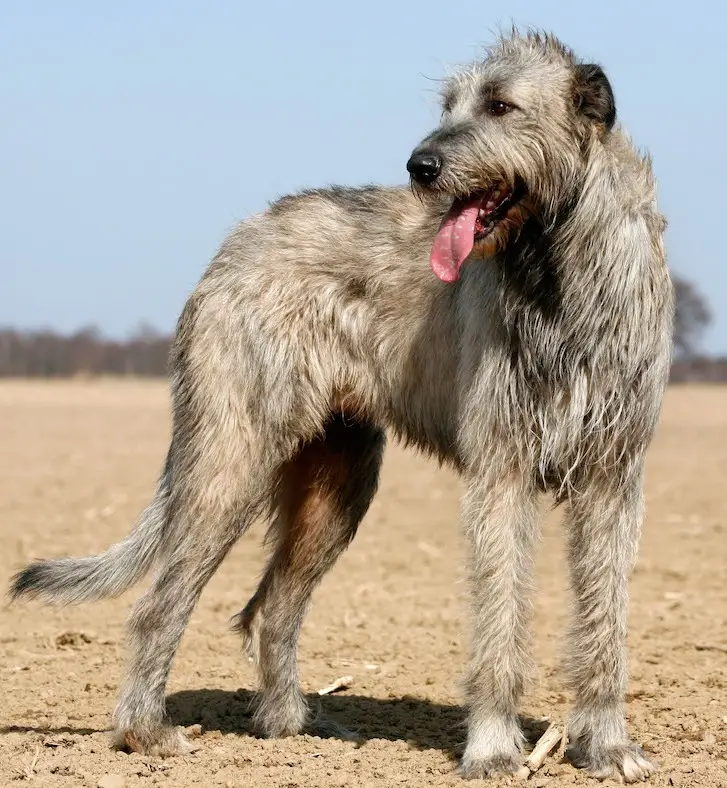Irish Wolfhound

Size: Medium
Coat: Wiry, Medium
Trainability: Agreeable
Activity: Regular Exercise
Barking: When Necessary
Summary:
The Irish Wolfhound is a majestic breed that embodies both strength and grace, originally bred for hunting large game like wolves and deer in Ireland. Known for their towering height, they are one of the largest dog breeds in the world, with males typically standing at least 32 inches at the shoulder, though many exceed 35 inches. Despite their formidable size, Irish Wolfhounds are gentle giants with a calm and affectionate demeanor. They are extremely loyal to their families and are known for being affectionate, making them excellent companions for families with children and other pets. Their quiet, dignified nature, paired with their loving behavior, makes them well-loved by those who appreciate their gentleness and calm presence.
Care:
Irish Wolfhounds have a distinctive rough, wiry coat that requires regular grooming to keep it in good condition. Brushing a couple of times a week will help prevent matting and keep their coat healthy. Their coat sheds minimally, making them a good option for people with mild allergies, but occasional grooming sessions with a professional may be needed to remove dead hairs. They also benefit from the occasional bath, but not too frequently, as over-bathing can strip their coat of natural oils. While they are generally low-maintenance in terms of grooming, Irish Wolfhounds are high-maintenance when it comes to exercise. Though their size and strength can suggest high energy, Irish Wolfhounds require moderate exercise to avoid overstraining their large bodies. Short daily walks and moderate play sessions are typically enough to maintain their health. Due to their sensitivity to cold, extra care should be taken during winter months to ensure they stay warm, and some owners choose to provide them with a warm coat or sweater in colder climates.
Conditions:
As gentle giants, Irish Wolfhounds need plenty of space to move around comfortably. They are best suited for families with large homes or properties with secure yards where they can stretch out and play. Their calm nature makes them excellent companions for families with children and other pets, as they tend to be patient and affectionate. However, due to their size, it is important to manage their exercise and prevent them from overexerting themselves, especially during their growth phase. Their large size does come with certain health considerations, including a shorter lifespan (around 6 to 8 years), and they can be prone to conditions like heart disease, bloat, and joint issues, such as hip dysplasia. Regular veterinary visits are essential for monitoring their health, and maintaining a healthy weight is important to prevent unnecessary stress on their joints and organs.
Back